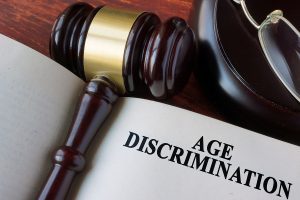A recent decision from the New Jersey Appellate Division affirms a trial court’s order requiring Gerber Products Company to bring a witness from Switzerland to New Jersey, at Gerber’s expense, to testify at a deposition in a discrimination lawsuit. A deposition is a formal interview under oath used to obtain testimony from witnesses in lawsuits.
 Denise Willson is a former Vice President of Medical Sales North America for Nestlé Infant Nutrition. Ms. Willson sued Gerber Products Company, Nestlé Healthcare Nutrition, Inc., Nestlé Holdings, Inc., and Gerber’s President and CEO, William Partyka, alleging they discriminated against her because of her age and gender. More specifically, she claims they fostered a “boys club” culture, paid her less than her younger male peers, denied her a promotion to the position of general manager, and ultimately fired her in retaliation for her complaints about the discrimination in violation of the New Jersey Law Against Discrimination (“LAD”).
Denise Willson is a former Vice President of Medical Sales North America for Nestlé Infant Nutrition. Ms. Willson sued Gerber Products Company, Nestlé Healthcare Nutrition, Inc., Nestlé Holdings, Inc., and Gerber’s President and CEO, William Partyka, alleging they discriminated against her because of her age and gender. More specifically, she claims they fostered a “boys club” culture, paid her less than her younger male peers, denied her a promotion to the position of general manager, and ultimately fired her in retaliation for her complaints about the discrimination in violation of the New Jersey Law Against Discrimination (“LAD”).
As part of her lawsuit, Ms. Willson alleges she spoke to Mr. Partyka’s supervisor, Alexandre Costa, about the retaliatory termination, gender discrimination and Gerber’s failure to promote her. When Ms. Willson’s lawyers sought to take Mr. Costa’s deposition, the defendants objected. They argued that Mr. Costa lives in Switzerland, claims his meeting with Ms. Wilsson was about sales rather than her allegations of discrimination and retaliation, denies he was involved in the decision to terminate her employment or has any other information pertinent to her case, and that requiring him to come to New Jersey for his deposition supposedly would “create a tremendous burden on [his] business.” The defendants also argued that neither Mr. Costa nor his employer, Nestlé Enterprises S.A., is a party to the lawsuit.
 New Jersey Employment Lawyer Blog
New Jersey Employment Lawyer Blog









